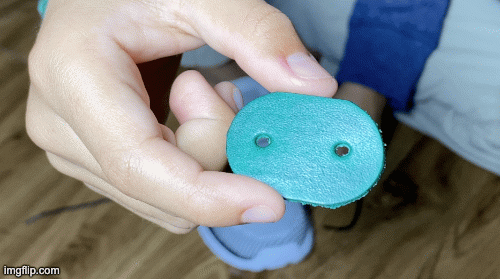
3 Ways Training Ties Products Can Benefit People With Autism
Share
Training Ties are a simple yet versatile shoe tying tool that can be a great help to everyone, no matter their age or ability! Bobby Morong, the inventor and founder of Training Ties, has experience teaching children with Autism and other disabilities how to tie their shoes independently. He used the feedback of his former students to guide the creation of Training Ties.
1. There are plenty of visual resources!

Some people with Autism may prefer learning visually, which is why Bobby Morong has plenty of GIFs and video material! Here's a link to another post that shows a GIF of tying shoes with Training Ties.
2. The upcoming two-color laces are perfect for instructing someone to tie their shoes!

Don't they look so cool? Being awesome aren't the only thing these two-color laces do. When asked to explain how duo colored shoelaces can help people with Autism learn to tie their shoes independently, Bobby said:
"The laces being one color on the left and a different color on the right helped the kids in my unit with shoe tying because there are a lot of verbal cues and directions when teaching this skill. It’s much more helpful and less overwhelming for both the teacher and the learner to reference and work with the color of a lace vs attempting to understand directional language. For example, 'Take the blue lace and bring it under the red lace' is much easier to follow than 'Take that lace and bring it under the other lace.'"
3. Training Ties can help develop fine motor skills!

Some people with Autism may experience difficulties with fine motor skills, including making a pincer grasp. A pincer grasp is when you hold something in between your index / first finger and your thumb. You may use a pincer grasp when holding a pen, buttoning your shirt, or tying your shoelaces.
Training Ties provide assistance with tasks like having to hold the loops in place while shoe tying so that the person with Autism doesn't struggle while performing the next steps in the shoe tying routine. Once they have learned to tie their shoes with Training Ties, the person with Autism can apply what they have learned to tying their laces without Training Ties!
Please let us know what you think of the article in the comments down below, and consider clicking the heart button!
